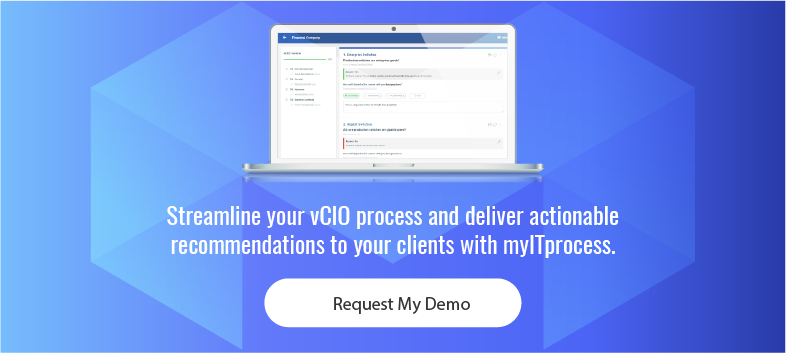At TruMethods, we talk about standards a lot. When implemented properly, they’re how MSPs lower ticket count, reduce reactive work and have more time to focus on strategic relationships with clients. While every MSP has its own set of standards, each standard should follow the same elements.
For the moment, think about when you go to the doctor. The doctor probably begins their examination by asking some high-level questions. How are you feeling today? Does anything hurt? These questions get the conversation going, but if you answer them a certain way, they will probably dig deeper.
Your standards must be set up in a similar way.
Each standard should fit into a broader category, essentially the technology area (e.g., core infrastructure, security). By doing this, you make it easier for your technicians to identify the location of a standard.
Once a category is identified, your technician can then plunge into the details by answering a series of questions when evaluating a client’s IT environment. These questions typically vary depending on the MSP, but they should mainly revolve around aligning your client’s environment with your standards.
For example, when one of your technicians is evaluating a client’s firewall, there may be a question or two about the type of firewall your client is using. A more common question about a client’s firewall would be the following: Is it a consumer- or an enterprise-grade firewall?
All the questions your technician should ask when visiting a client should be prioritized. Of course, since every MSPs has its own standards, the prioritization of those questions often varies. What’s important to you may not be as important to one of your competitors.
Even though these questions typically vary from MSP to MSP, they should always have purpose and meaning. Always consider this when evaluating your questions: Why are these the questions you’re asking? What are you looking to achieve by asking them when assessing a client’s IT environment? But your technicians aren’t asking these questions every day.
What is even more important than the questions your technicians ask when evaluating a client’s IT environment is how often your technicians seek the answers to those questions. Setting a cadence ensures you’re differentiating yourself from your competitors.
Finally, your standards must provide your technicians with “how-to” links. For example, a technician isn’t sure how to configure a firewall, there should be a way for him to find out how. There must be a process in place to ensure your technicians can deliver for your clients.
While MSPs have different standards, the core elements of those standards should be consistent across the board.


